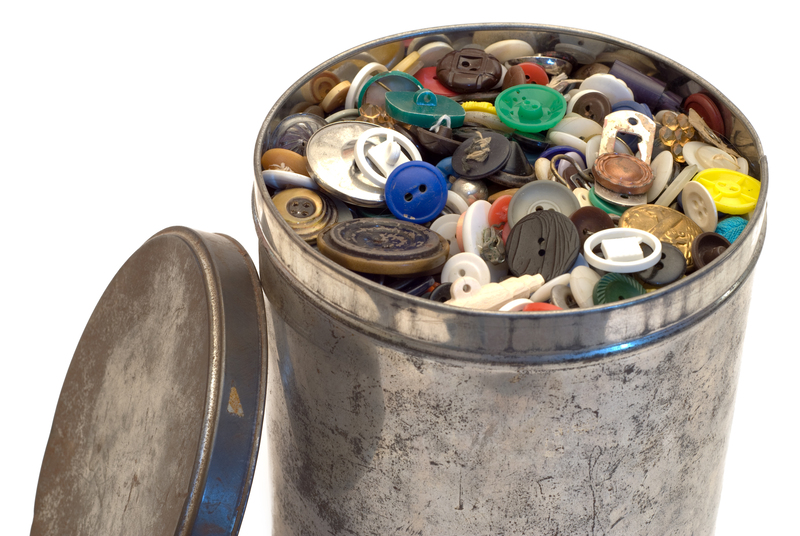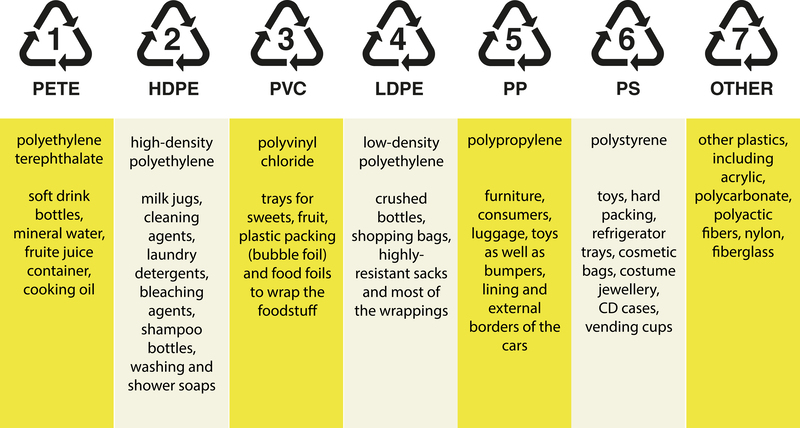Simple Steps for Disposing of Unwanted Pots and Pans
Are your old kitchen pots and pans piling up and you're not sure what to do with them? Upgrading your cookware is exciting, but parting with old and unwanted pots and pans can be confusing. Many people are left wondering: Can you recycle cookware? Is donating an option? What's the safest and most eco-friendly route?
In this comprehensive guide, we'll walk you through simple steps for disposing of unwanted pots and pans. We'll cover environmentally friendly disposal options and offer practical advice to ensure your kitchen decluttering is both responsible and stress-free.
Why Responsible Disposal of Pots and Pans Matters
Properly disposing of old pots and pans isn't just about clearing space in your cabinets. Used cookware can contribute to landfill waste and potentially leach harmful substances into the environment if not handled correctly. Moreover, some cookware materials can be recycled or even repurposed, reducing environmental impact and supporting sustainability efforts.
Common Reasons for Disposing of Old Cookware
- Upgrading to new nonstick or induction-ready cookware
- Pots and pans have worn out, warped, or lost their coatings
- Inherited or gifted kitchenware you don't need
- Downsizing or moving home
- Changing cooking habits or lifestyles
Environmental Impacts of Improper Cookware Disposal
Many types of cookware are made from metals, polymers, and sometimes toxic coatings (such as Teflon). When dumped in landfill, these materials break down slowly and may release pollutants into the soil and water system. Some pans can also pose safety risks if handled improperly in waste facilities.
That's why it's crucial to explore your options for proper and eco-friendly pan disposal. Let's examine the best ways to handle unwanted kitchenware.

Assess the Condition of Your Unwanted Cookware
Before deciding how to get rid of your pots and pans, carefully inspect each piece. Some items may have a second life, while others are best sent for recycling or disposal.
Checklist: What to Look For
- Are there cracks, chips, or serious warping?
- Is the nonstick coating flaking or peeling?
- Are handles broken or missing?
- Does the cookware have excessive rust.
- Are the pots and pans still functional for basic cooking?
If your cookware is still usable, consider donating or repurposing before recycling or disposing.
Simple Steps to Dispose of Unwanted Pots and Pans
1. Try to Reuse Your Cookware First
Before looking for disposal methods, ask yourself if the pots and pans could serve another purpose around your home. Upcycling and reusing is the greenest strategy!
- Use old pots as plant containers for garden or indoor decor
- Turn frying pans into wall clocks or kitchen art
- Utilize as makeshift storage for tools, toys, or craft supplies
- Transform lids into utensil holders or pot trivets
Don't hesitate to get creative--there are countless ways to repurpose old cookware and give it a charming new function!
2. Donate to Charities or Community Organizations
If your pots and pans are still in good condition, donating is an excellent option for disposal. Many charities and community organizations gladly accept used cookware, especially for families in need or those relocating.
- Check with local thrift stores (e.g., Goodwill, Salvation Army, Habitat for Humanity ReStores)
- Nonprofits supporting refugees or the homeless often welcome donated kitchen essentials
- Community kitchens or soup kitchens may need robust stockpots and skillets
- Post on online community boards or neighborhood groups (e.g., Facebook Marketplace, Freecycle, Nextdoor)
Tip: Clean your cookware thoroughly before donating and ensure it still has handles and operating lids, if possible.
3. Sell Gently Used Cookware Online
Have high-quality or brand-name pots and pans you no longer need? Selling your cookware could help it find a second home while earning you a bit of cash.
- List items on online marketplaces such as eBay, Facebook Marketplace, OfferUp, Poshmark, or Craigslist
- Bundle sets of pans for increased appeal
- Highlight brand, material (stainless, cast iron, ceramic, copper), and condition
- Include good photos and accurate descriptions
*Give your cookware a new lease on life while contributing to the circular economy!*
4. Recycle Your Old Pots and Pans
If your pans are broken, badly scratched, or simply unusable, recycling is the most environmentally conscious route. However, the process can be tricky since cookware is made from various materials.
Preparation Steps for Recycling
- Check your cookware for material type--stainless steel, aluminum, cast iron, copper, enameled, or nonstick coated.
- Remove plastic handles or rubber parts if possible, as they may be processed separately
- Confirm whether your local recycling center accepts pots and pans (policies vary by region)
Where to Recycle Old Pots and Pans
- Municipal recycling centers: Many take scrap metal, including most pots and pans (excluding those with nonstick or ceramic coatings)
*Search for "scrap metal recycling drop-off near me"* - Specialty recycling companies: Some companies cater to cookware made of mixed materials or with coatings
- Household hazardous waste collection events: Check for drop-offs that accept Teflon-coated or chemically treated cookware
- Retailer recycling programs: Certain stores, such as Sur La Table or Williams Sonoma, offer cookware recycling campaigns a few times each year
**Pro Tip:** Never place nonstick, Teflon, or ceramic-coated pans in standard curbside recycling unless your provider specifically allows it; coatings can contaminate metal recycling streams.
5. Responsible Trash Disposal of Unwanted Pots and Pans
Sometimes, if items are too damaged or not suitable for recycling, putting your pots and pans in the trash may be the only viable disposal method. However, it's important to minimize waste and only take this step as a last resort.
- Try to remove as much non-metal material as possible
- Place in your regular rubbish if allowed by local policies
- For large or multiple items, check if your municipality offers bulk pickup
*Whenever possible, prioritize recycling and donation for disposing of kitchen cookware.*
Material-Specific Guide: Disposing of Different Types of Cookware
Stainless Steel Pots and Pans
- Highly recyclable and sought after by scrap metal facilities
- Remove non-metal components before recycling
- Clean thoroughly for best results
Aluminum Pots and Pans
- Aluminum is valuable and widely recycled
- Check for any coatings--coated pans may not be accepted everywhere
- Scrap yards may require a minimum weight for buy-back
Cast Iron Skillets and Pans
- Cast iron is durable and can often be restored or seasoned for reuse
- If broken or rusted beyond repair, take them to a scrap yard
- Some community kitchens or restaurants may accept donations if still usable
Copper Cookware
- Copper is valuable; most recycling centers will accept it
- Some pans have aluminum or stainless steel cores--these may require special handling
- Try selling or donating; antiques or vintage copper pans are especially popular
Nonstick and Ceramic-Coated Pans
- Nonstick coatings (like Teflon) make pans hard to recycle via typical channels
- Contact your local hazardous waste disposal for recommended steps
- Never place in regular curbside recycling unless explicitly allowed
- Consider upcycling or donating if coating is undamaged
Glass, Enamel, or Stoneware
- Glass and stoneware are often not accepted in standard recycling
- Some specialized facilities may take enameled pans for scrap
- Donate if there are no chips or cracks

Frequently Asked Questions: Disposing of Pots and Pans
Can I put old pots and pans in the recycling bin?
In most cases, *don't put pots and pans in your regular blue bin* unless your service specifically says you can. Scrap metal should be taken to a dedicated recycling drop-off.
What should I do with pots and pans that have nonstick or Teflon coatings?
Nonstick coatings can't be recycled with regular metals. Contact your city's hazardous waste disposal or inquire if your local waste management facility accepts these items during special drop-off events. Otherwise, consider upcycling.
Are rusty or broken pans still recyclable?
Yes--scrap metal yards will usually accept rusted or broken cookware, as long as plastic, wooden, or rubber parts are removed. Severely damaged nonstick pans should be disposed of as hazardous waste.
Does Goodwill or Salvation Army accept pots and pans?
Most thrift stores accept gently used metal cookware, provided it's clean and in usable condition. Heavily worn, rusty, or flaking nonstick pans usually aren't accepted. Always call ahead to confirm.
How can I repurpose old cookware creatively?
Turn old frying pans into garden planters or bird baths, use them for storing household items, or find craft projects online to give your pots and pans a new lease on life as home decor!
Conclusion: Clear Your Kitchen & Help The Environment
The best and simplest steps for disposing of unwanted pots and pans always start with considering reuse or donation. If your items have reached the end of their usable life, recycling them responsibly is the most sustainable choice.
- Donate or sell cookware that's still usable
- Recycle metal pots and pans at a scrap metal drop-off
- Dispose of hazardous materials thoughtfully (especially nonstick coatings)
- Get creative with upcycling and repurposing
By following these steps, you'll not only reclaim space in your kitchen but also reduce unnecessary waste. Remember, small actions like responsible disposal add up to meaningful environmental impact.
Have more tips or questions about disposing of old pots and pans? Share your ideas in the comments and help others on their green cleanout journey!
```